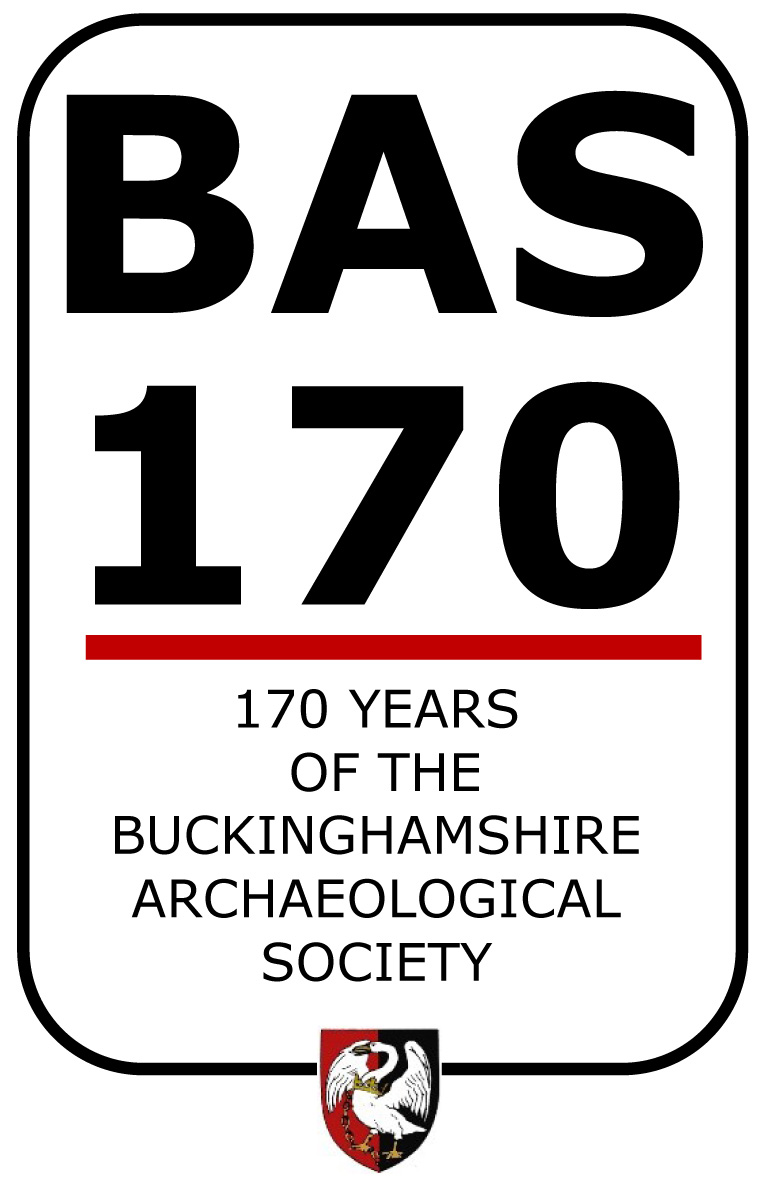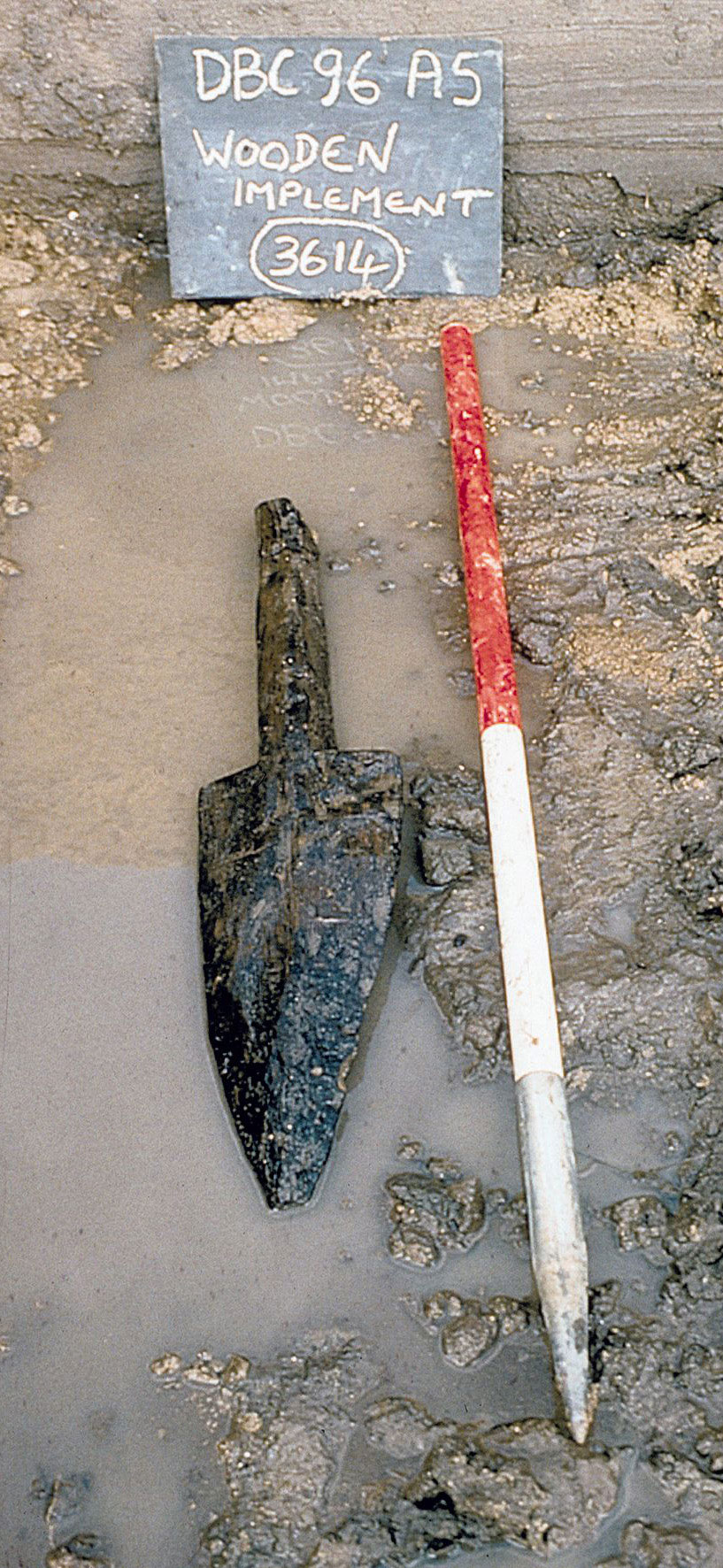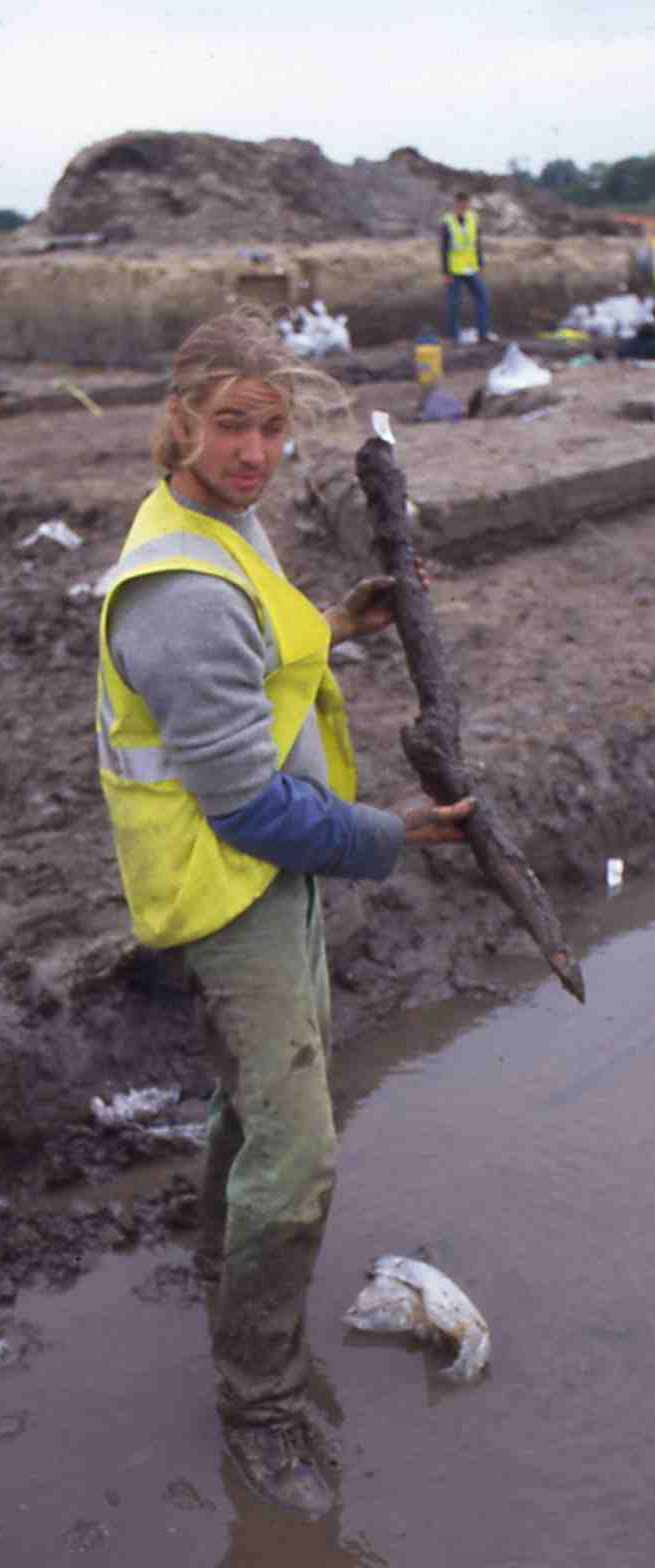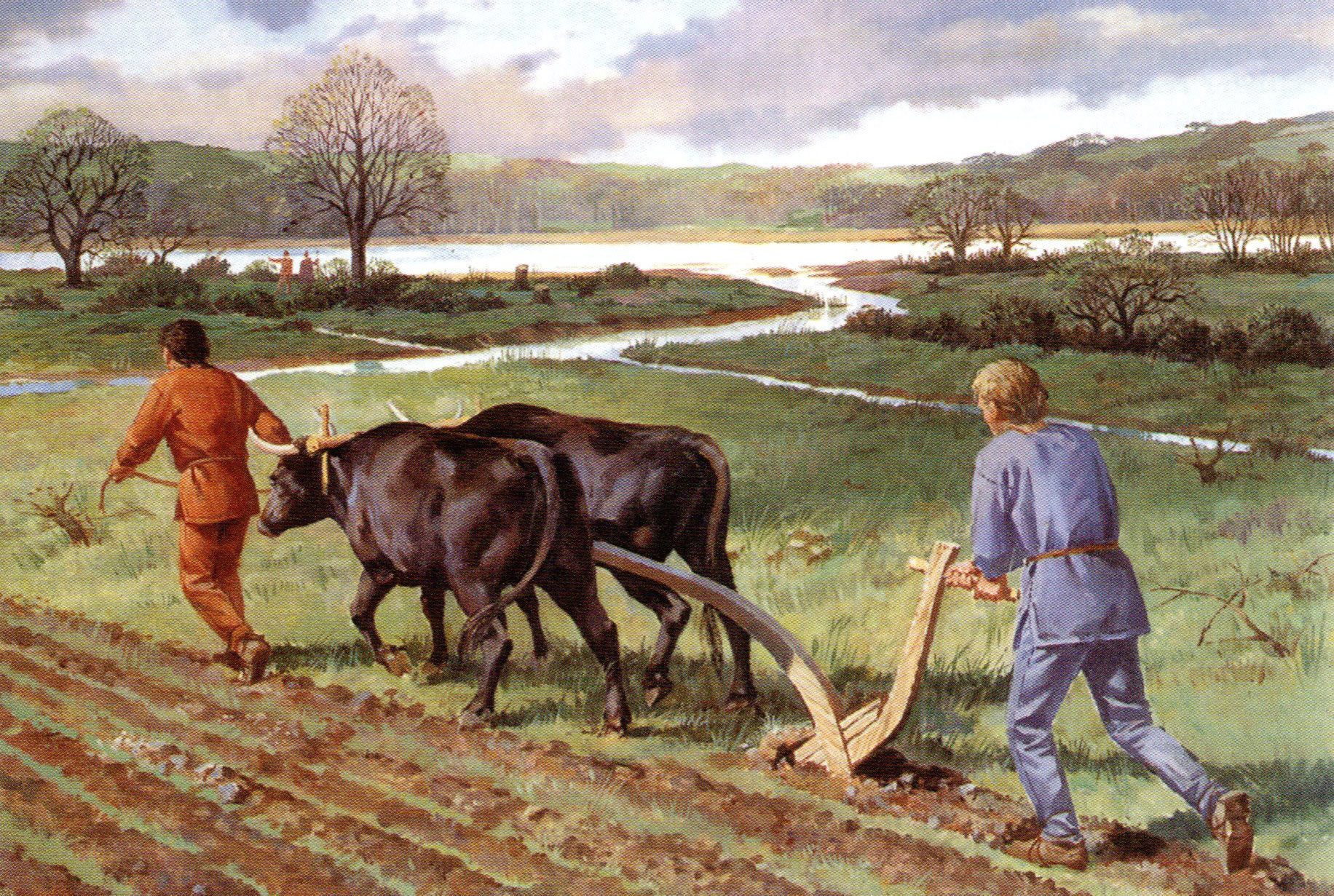The ‘ard’ or ploughshare was made in the Bronze Age, between 940 and 560 years BC.
THE WOODEN ‘ARD’ OR PLOUGHSHARE that is the third object in our series is a remarkable survival that symbolises a fundamental change in the
relationship between our ancestors and the landscape around them.
The ard is the simplest form of plough. It required two oxen dragging a shaped wooden blade or ploughshare through the ground to lift and break the earth before
seed was sown. Our example was found in the 1990s during the construction of Eton College's Rowing Lake at Dorney beside the river Thames in south Buckinghamshire.
Before the lake was constructed, Oxford Archaeology dug trenches across an abandoned channel of the Thames. They discovered a series of timber bridges dating
to the Bronze and Iron Ages (2500 BCE to 100 AD) alongside which were deposited animal and human bones, pottery, charred cereal grains and the ard ploughshare.
On dry land all the wooden objects would have decayed away long ago but in the muddy airless channel they survived in pristine condition.
The ard-head and stilt is formed from a half split log of Field Maple. The head is arrow-shaped and 33 cm long. The lower surface of the head has been shaped
to be slightly convex and rises towards the tip. This surface still carries evidence of faint toolmarks. The tip may have been broken in antiquity as it is very blunt.
Most prehistoric families would have owned and relied upon an ard so that they could grow cereals to make their daily bread. Ards were sometimes tipped with
stone or metal but only a handful of wooden ard shares have been discovered in Britain, and this may be the oldest. Radio-carbon dating suggests it was made between 940 and 560 BC.
By this time, towards the end of the Bronze Age, the rich soils of the Thames Valley had seen increasingly widespread and systematic cultivation for more than
1,000 years. The landscape had been transformed by competing local communities dividing it up into ditched and hedged fields and building forts at commanding points along the
river, notably at Taplow and near Marlow. With a growing population much more effort was put into using the land productively by managing herds of cattle and flocks of sheep,
and ploughing larger areas to grow wheat and barley.
Ards would have been used across the whole county: contemporary settlements with tools and weapons made of bronze have been found around Aylesbury and on
Ivinghoe Beacon. In Milton Keynes a remarkable hoard of gold neck rings was found a few years ago buried in a clay pot. This rising population and a new emphasis on personal
status and military prowess is characteristic of the time and could ultimately be sustained only by more productive agriculture.
Although the ard was a utilitarian object, its end was more connected with the realm of ritual and spirituality. For more than 200 years people have been making
unusual prehistoric discoveries along the Thames, often brought to light by dredging or building work. Most dramatic are Celtic shields and helmets; more common are swords and
spearheads and human skulls. It has long been supposed that these are votive deposits, perhaps offerings to the god of the river.
The excavations at Dorney Rowing Lake revealed for the first time how some artefacts were deposited into the river from bridges, and that ordinary objects such
as pottery and grain could get similar treatment to fine metalwork and human remains. We will never know who placed our ard ploughshare in the river, nor precisely why they
did so, but it was most likely an offering. Perhaps it was old, had been replaced and was offered in thanks with other gifts in the hope that the river god would bless the next
plough to be as fruitful as the last?
For us today the Dorney ard is a memory of the ordinary farmers of prehistoric Buckinghamshire. It reminds us of the innumerable common folk who tilled the land,
herded animals, and lived in thatched wattle huts.
|




